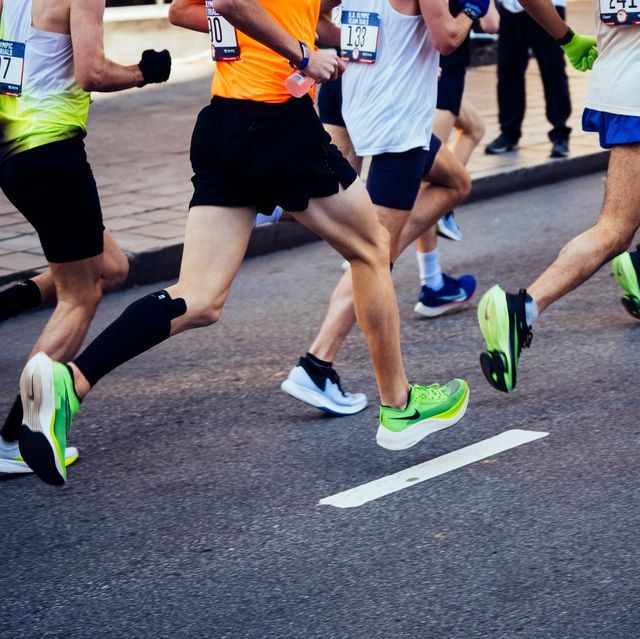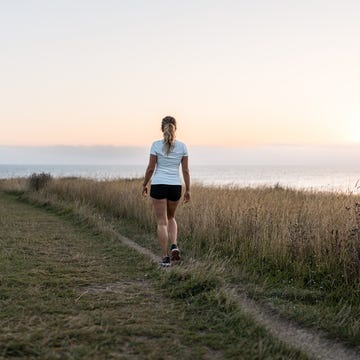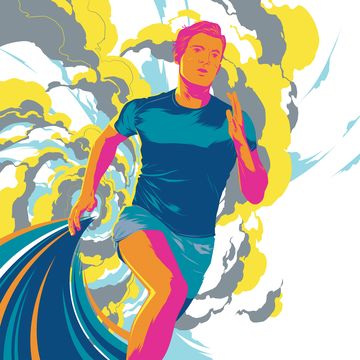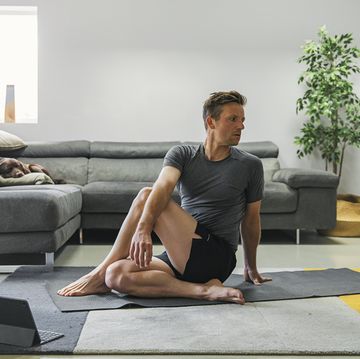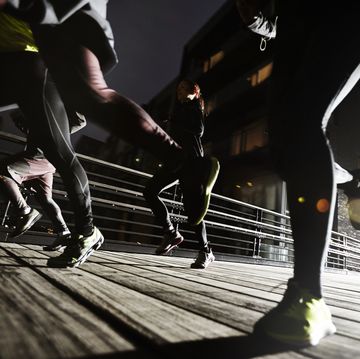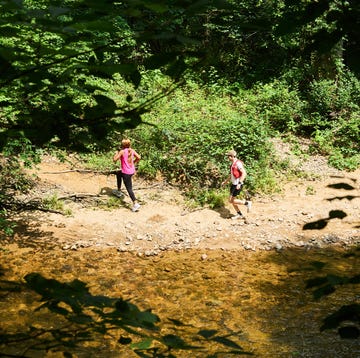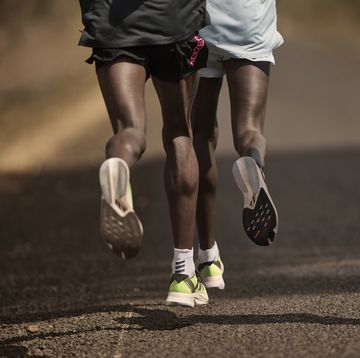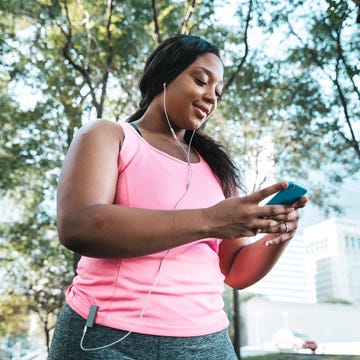Just as no two people are the same, no two runners have the same stride length, either. We all strike our feet against the ground to different rhythms and at varying distances from the body.
While it is impossible for all runners to adhere to a uniform stride pattern, learning about (and making tweaks to) our own stride lengths can help us to become more efficient runners. Here’s what you need to know about this important part of running form.
What is stride length?
The word 'stride' is used pretty casually among runners. It’s often confused with your gait or step count, when it is, in fact, something different.
'Stride length is the distance covered between the spot where one foot hits the ground and the next time that same foot hits the ground again,' says Robert Maschi, an associate clinical professor in the Physical Therapy and Rehabilitation Sciences Department at Drexel University, and the leader of Drexel’s Running Performance and Research Center.
The number of steps you take is always twice the number of strides you take – and the number of steps you take per minute is actually called your cadence.
Erika Lee Sperl, a kinesiologist based in Minneapolis, US, believes that it’s hard to think about (or tinker with) your stride length without also considering your cadence and pace. 'If you’re maintaining the same pace but running with a shortened stride length, you’ll increase your cadence because you’ll be taking more steps per minute,' she explains. 'If you lengthen your stride, you’ll be taking less steps per minute at the same pace.'
What is the ideal stride length?
The ideal stride length depends on the individual. You’ve probably heard that the 'magic number' for cadence is 180 steps per minute. While it’s a good rule of thumb, it’s not right for everyone.
'This is based on observations by the famous running coach Jack Daniels, who wrote that the majority of elite distance runners at the 1984 Olympic Games had a cadence of 180 foot strikes or higher per minute,' says Maschi. Recreational runners, meanwhile, tend to run with a cadence of 140 to 170 foot strikes per minute.
Maschi adds that it's not just the overall length of a step or a stride that’s important. 'What’s most important is the position of the foot relative to the centre of your body when it contacts the ground,' he explains.
That’s because stride length functions on a bell curve. Research indicates that overstriding – that is, running with the leading foot extended too far in front of the body – can increase your risk of injury. 'Plus, overstriding places the body in a biomechanically inefficient position to move into the second stage of the gait cycle, and is subsequently less effective in generating forward momentum,' says Sperl.
On the flip side, if your stride length is too short, you can’t store enough energy in the swing phase of your gait. You also won’t be able to use as much force when you hit the push-off phase of your gait, meaning you’ll have less forward momentum, explains Sperl.
What determines stride length?
You do. Some people naturally stride long, while others fall into a shorter stride.
Many people think that stride length is linked to your height or leg length, but that's not necessarily the case. In fact, a study has shown that runners with long legs can have a short stride, while shorter runners can have a long stride. In short (no pun intended), height doesn’t always determine your stride.
A lot of variables go into the equation of stride length – not just your height, leg length or running biomechanics like your foot strike.
'Some of the other variables that determine stride length are bodyweight, flexibility and stiffness (or how much the joints of the foot, knee, and hip move during the running gait),' says Maschi.
According to John Vasudevan, associate professor of clinical physical medicine and rehabilitation at the University of Pennsylvania, hamstring tightness has a significant influence on our ability to adjust your stride length, along with calf tightness. 'Many runners have learned how to adjust their stride within the boundary of such tightness, but addressing the issue helps to open new possibilities for training, particularly on terrain with more elevation change,' he says.
That’s because your stride length can change during a run, Maschi explains. As you go uphill, your steps tend to get shorter and you take more of them. On the downhill, your steps will open up and you’ll take fewer of them. When you generate more power, like during a sprint to the finish, your step length, cadence, or both can increase. And the more fatigued you get (like during the latter stages of a marathon), the more your step length, cadence, or both can decrease.
Why does stride length matter?
'To run faster, a runner either needs to cover more ground with each step length, increase their cadence, or do a combination of the two,' says Sperl.
But optimising your stride length and cadence won't just help you to run faster – it'll also improve your running efficiency. 'At your ideal stride length and cadence, you’ll be able to run at the same pace with a reduced heart rate and oxygen consumption,' explains Maschi. 'That reduced heart rate and oxygen consumption would lead to a lower energy cost and effort while running.'
It'll also help to protect you from injury. 'One of the most common injuries in runners is patellofemoral pain, or runner’s knee,' says Sperl. 'That’s very common when you have just a slight tendency to overstride – even if it’s not very obvious. Your knee is more extended when your foot hits the ground, so your leg is straighter and further in front of you. The way the force from the ground pushes back up through your body in that position can lead to an increased risk of patellofemoral pain.'
Should you change your stride length?
Whether you’re a new runner or an experienced one, the stride length you naturally choose is likely your most efficient. This is according to a 2017 study, which compared runners’ preferred stride lengths to strides that were plus and minus 8 and 16 percent of them.
'The body is remarkably adept at remembering movement patterns, and this includes your stride length and steps per minute,' says Sperl. 'Sometimes it’s counterproductive to try and change biomechanical patterns that have been ingrained for years.'
That said, if you can mess with your stride safely, it could make you more efficient, says Maschi. Of the 12 runners involved in a study published in PLOS One, those who increased their running cadence a small amount above their self-selected cadence immediately lowered their heart rate.
If you tend to overstride, Sperl suggests getting a proper gait evaluation from a qualified physical therapist, biomechanical specialist or kinesiologist to help you figure out where you can make adjustments.
You can also safely play around with cadence to influence your stride, says Vasudevan. You could do so by maintaining a consistent pace but adjusting your steps per minute. Listening to songs with different rhythms or using a metronome app can help with this. If you find it hard to make changes on your own, though, and need to do so to reduce your injury risk, Vasudevan suggests working with a coach or physical therapist.
